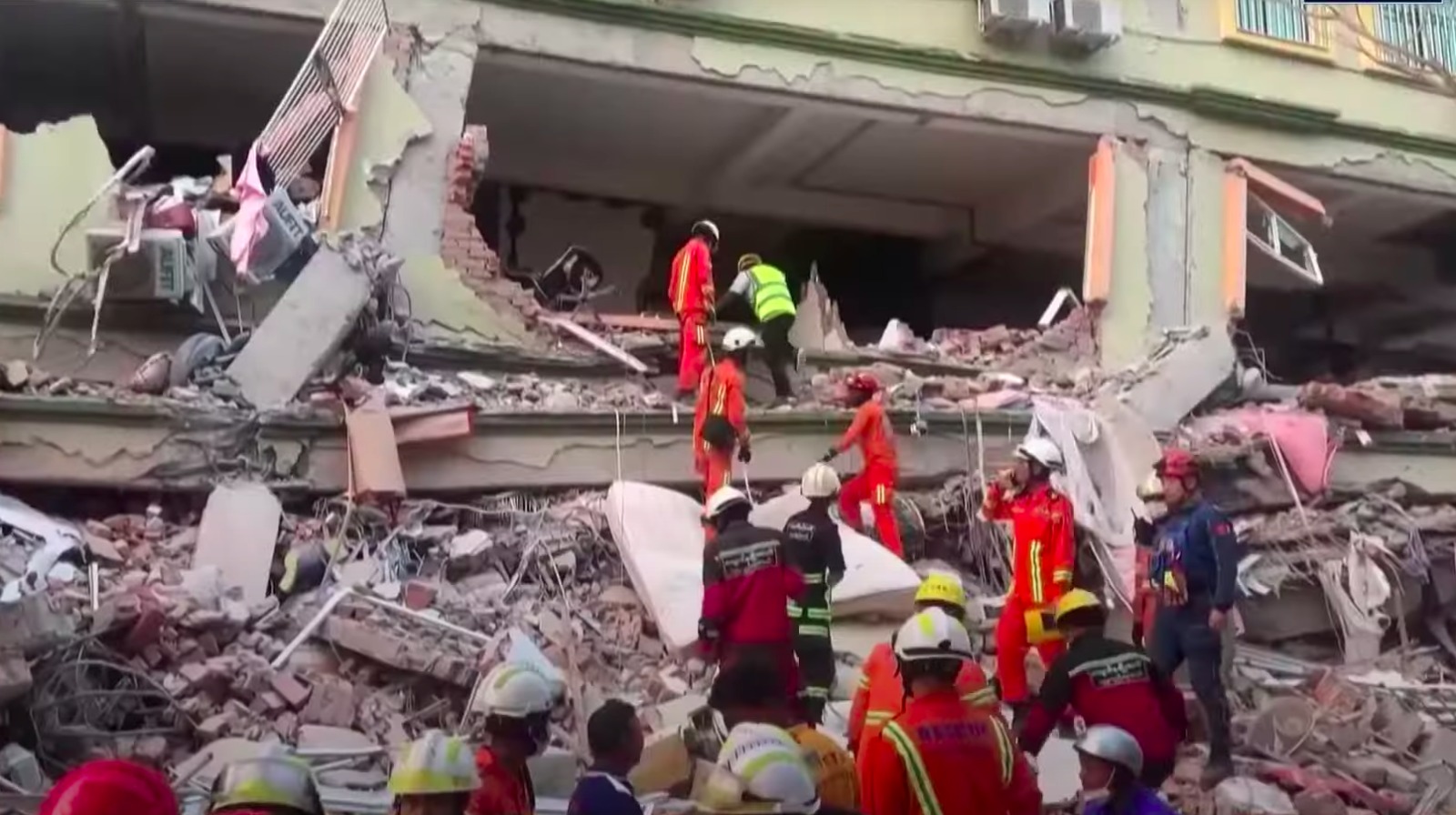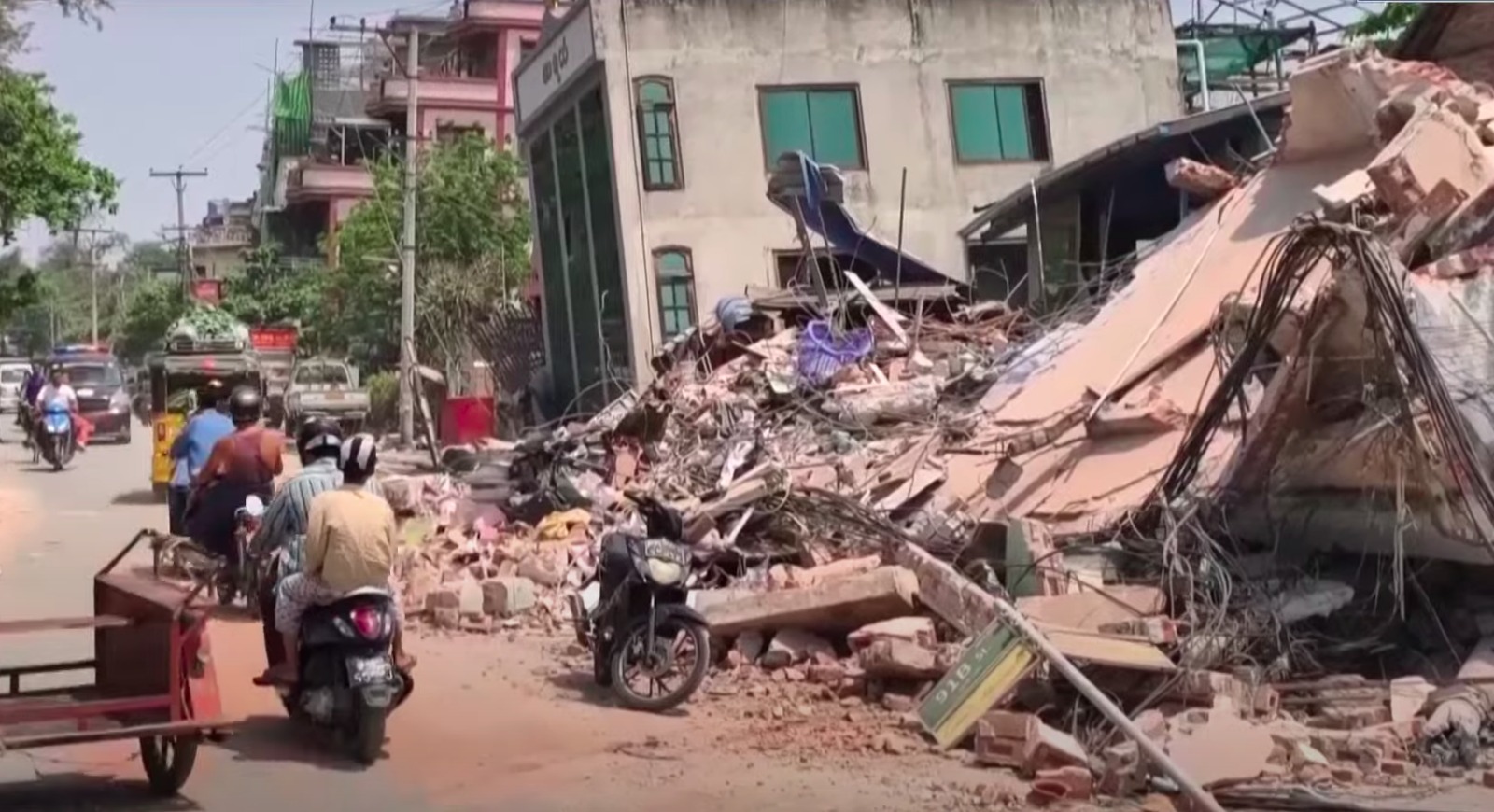
Another Shake, Another Shock
Just when folks in Myanmar had started to catch their breath after that big March 28 earthquake, the ground gave another scary jolt. On April 13, around 8 in the morning, a fresh earthquake this time 5.5 on the scale hit close to Meiktila. That’s somewhere in the middle of Mandalay and Naypyitaw.
Now, this wasn’t just another mild tremor. It was one of the strongest aftershocks since last month’s quake. People were already scared, and this one brought all that fear right back. Honestly, it’s not just about buildings shaking people’s hearts shook too.
Where Exactly Did It Strike?
This quake hit central Myanmar, about 28 km west of Meiktila. The US Geological Survey said the depth was roughly 10 km. Not too deep, so folks on the surface felt it strongly.
And this area? It’s not just any spot. Meiktila has been under a lot of pressure recently, quite literally. Sitting between two big cities and along the Sagaing Fault Line, this zone has become a sort of tension point.
Locals said they rushed out of their homes, markets, and tea stalls. “We didn’t even wait to switch off the stove,” one shopkeeper said. Some towns lost electricity for a bit, adding to the panic.
But Why So Many Quakes All of a Sudden?
See, Myanmar sits on the Sagaing Fault. It’s a major crack running through the country, part of a much larger fault system connected to the Indo-Australian and Eurasian plates. You must’ve heard of tectonic plates they’re like slow-moving giant slabs under our feet. When they grind or bump into each other, the earth shakes.
Small tremors are common in this part, yes. But the recent ones? They’ve been stronger and happening more often. The March 28 earthquake was a 6.0 it damaged plenty of older buildings that weren’t built for such things. This April 13 one may be smaller, but it came at a time when people hadn’t even fully recovered from the last one.
So the panic was understandable.
People Ran—Again
Eyewitness Bits
In Meiktila, Than Htay, who runs a small tea stall near the main road, said, “We were just opening the shop, and suddenly everything started wobbling. First the spoons clinked, then the glasses toppled. We all just ran.”
No major injuries were reported, thankfully. But fear? That was everywhere. Schools closed for the day. Hospitals moved patients outside. Nobody wanted to be inside any tall building. Can’t blame them, really.
This Region’s Been On Edge
This isn’t just about Myanmar. Few days back, Tajikistan faced a bigger 6.4 magnitude earthquake. All across Asia, it seems the plates below are shifting more than usual lately.
And for Myanmar, this timing couldn’t be worse. The country is already handling political tension and an economy under pressure. Add repeated natural disasters to the mix, and it becomes a real struggle—for the government, and especially for common people.

Are Authorities Doing Enough?
Government folks did issue the usual earthquake safety tips:
- Stay away from damaged walls and buildings
- Keep a small emergency kit ready
- Don’t use lifts when the ground shakes
- Know which corner in your home is safest
- Teach children and elders what to do
All this is good. But people are asking for stronger action. “What’s the point of drills if the buildings collapse?” asked someone from Mandalay. And that’s a fair point.
What’s needed now is not just awareness but strong buildings and quicker relief work. Because when the same fear keeps coming back every few weeks, it wears people down.
A Bigger Lesson for Southeast Asia
These repeated tremors—first in Myanmar, then Tajikistan are not just flukes. They’re signals. The whole region, from the Himalayas to Southeast Asia, sits on dangerous tectonic zones. Many cities in these parts still don’t have proper earthquake-proof buildings.
Japan is one example where even big quakes don’t cause much harm because they’ve got solid systems in place. Strict building codes, educated citizens, proper drills. Other countries, including ours, need to follow suit.
What Now?
The people of Myanmar have seen more than their share of hardship. Political issues, economic troubles, and now, quakes. But somehow, they still hold on with courage.
Yes, the earth shook again. But life didn’t stop. People helped each other. Strangers became family, if only for a few minutes.
Hope is alive. But let’s not rely on hope alone. This is the time to:
- Plan ahead
- Build better
- Stay informed
- Watch out for one another
Let’s not wait for a bigger disaster to make us act.
If you found this blog interesting, you might enjoy this one too: Waqf Act Controversy: What’s Happening in Murshidabad?
Interested in this? You’ll also want to read: Myanmar earthquake: What we know

No comments yet. Be the first to comment!